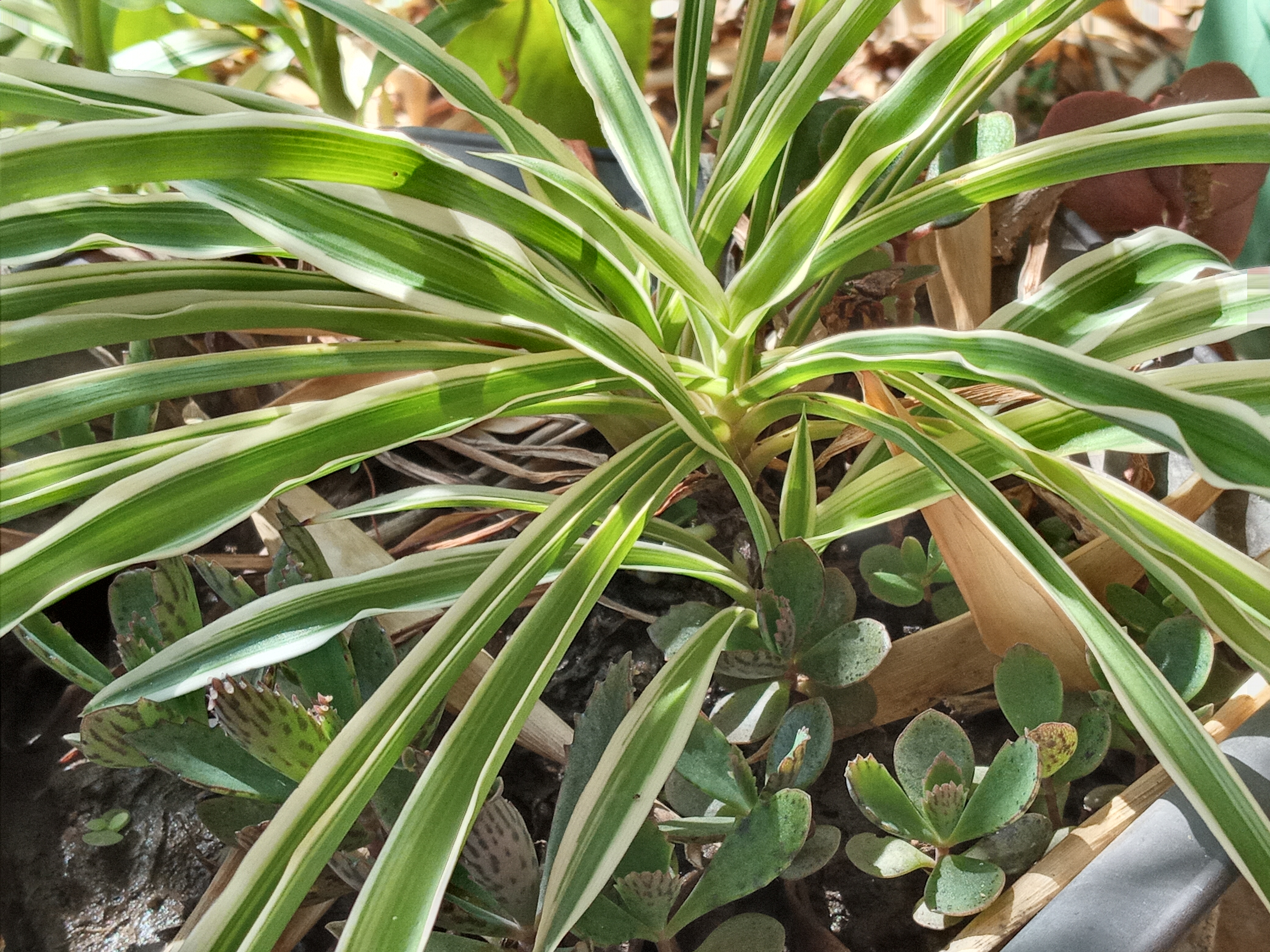Adopta el paso de la Naturaleza: su secreto es la paciencia.
Adopt Nature's pace: its secret is patience.
Ralph Waldo Emerson
¡Hola amigos de #AmazingNature! Espero se encuentren bien y disfrutando el inicio de esta nueva semana en la que llegaremos al mes más esperado del año, diciembre. Mientras tanto, realicemos nuestras actividades con mucho ánimo y vayamos por nuestras metas con el entusiasmo de siempre.
Hello friends of #AmazingNature! I hope you are well and enjoying the beginning of this new week in which we will reach the most awaited month of the year, December. In the meantime, let's carry out our activities with high spirits and go for our goals with the usual enthusiasm.
Hoy quiero compartir con ustedes el verdor del follaje de una planta cuyo sistema de reproducción es muy atrayente, se trata de la Lazo de Amor, conocida también por los nombres comunes Araña, Cintas, Falangera, Malamadre o Planta Araña. Es también conocida por los diversos beneficios para la salud al ser una planta purificadora del aire.
Today I want to share with you the greenery of the foliage of a plant whose reproductive system is very attractive, it is the Love Lace, also known by the common names Spider, Cintas, Falangera, Malamadre or Spider Plant. It is also known for its various health benefits as an air purifying plant.


Es una planta con unas hermosas hojas alargadas, arqueadas y angostas de color verde con bordes blancos que se asemejan a cintas y la hacen muy atractiva a la vista, por lo que posee un gran valor ornamental. También podemos encontrar algunas variedades cuyas hojas con una franja amarilla en la parte central de sus hojas. Es oriunda de Sudáfrica y pertenece a la familia Agavaceae aunque algunos autores consideran que pertenecen a la familia de las Liliacéas.
It is a plant with beautiful leaves elongated, arched and narrow green leaves with white edges that resemble ribbons and make it very attractive to the eye, so it has a great ornamental value. We can also find some varieties whose leaves have a yellow stripe in the central part of its leaves. It is native to South Africa and belongs to the family Agavaceae although some authors consider that they belong to the family of Liliaceae.
Su nombre científico es Chlorophytum comosum. El nombre del género, Chlorophytum, está compuesto por las palabras griegas chloros y phyton que significan, respectivamente, verde y planta; es decir, planta verde. El epíteto específico comosum que significa cabellera o melena.
Its scientific name is Chlorophytum comosum. The genus name, Chlorophytum, is composed of the Greek words chloros and phyton meaning, respectively, green and plant; i.e., green plant. The specific epithet comosum meaning hair or melena.


Puedes colocar al Lazo de Amor donde no reciba la luz solar directamente ya que podría quemar sus hojas y, ya que tolera bien la sombra o semi sombra, la puedes colocar en el interior de tu hogar más aún cuando se le considera como una planta capaz de renovar los ambientes afectados por monóxido de carbono y formaldehído.
You can place the Love Loop where it does not receive sunlight directly as it could burn its leaves and, since it tolerates shade or semi-shade well, you can place it inside your home even more so since it is considered as a plant capable of renewing environments affected by carbon monoxide and formaldehyde.
Es una especie que puede tolerar la sequía así que es recomendable realizar su riego cuando su suelo se encuentre seco, aproximadamente, tres veces por semanas, cuidando que no sea un riego excesivo que produzca encharcamiento. Y, tal como te he comentado, su propagación es muy curiosa y fácil ya que la Lazo de Amor se reproduce a través de la emisión de estolones o varas largas que albergan plantas hijas en desarrollo, por tanto, basta con trasplantar a estas pequeñas plantas para que disfrutes de una nueva Cinta o Lazo de Amor.
It is a species that can tolerate drought, so it is advisable to water it when the soil is dry, approximately three times a week, taking care not to water it excessively and cause waterlogging. And, as I have mentioned, its propagation is very curious and easy since the Love Loop reproduces through the emission of stolons or long rods that house daughter plants in development, therefore, it is enough to transplant these small plants to enjoy a new Love Loop or Love Loop.

¡Gracias por tu visita! ¡Gracias por leerme!
¡Hasta pronto amigos!
Thank you for your visit! thank you for reading me!
See you soon friends!

Fuentes Consultadas
• AD
• Hogar Mania
• Mi Colección de Plantas
• Plantukis
• Naturaleza Tropical
• Plantukis
• Wikipedia
Traducción realizada utilizando DeepL
Translation using DeepL
| Dispositivo: | SAMSUNG A10s |
|---|---|
| Cámara: | SM-A107M |
| Ubicación: | Lechería, VENEZUELA |
Congratulations, your post has been upvoted by @dsc-r2cornell, which is the curating account for @R2cornell's Discord Community.
Many thanks to the @R2Cornell's Community, @dsc-r2cornell and @jasonmunapasee for your appreciation of my publication and your valued support! Thank you so much!
We appreciate your work and your post has been manually curated by @redheadpei on behalf of Amazing Nature Community. It will be added to the weekly botany curation post. Keep up the good work!
Thank you so much Amazing Nature and @redheadpei for your support of my publication. Much ppreciated!